- Home
- Michael Swanwick
Not So Much, Said the Cat
Not So Much, Said the Cat Read online
Table of Contents
PRAISE FOR MICHAEL SWANWICK
Also by Michael Swanwick
Contents
Acknowledgement
Introduction:
The Man in Grey
The Dala Horse
The Scarecrow's Boy
Passage of Earth
3 A.M. in the Mesozoic Bar
Of Finest Scarlet Was Her Gown
The Woman Who Shook the World-Tree
Goblin Lake
From Babel's Fall'n Glory We Fled . . .
For I Have Lain Me Down on the Stone of Loneliness and I'll Not Be Back Again
Libertarian Russia
Tawny Petticoats
Steadfast Castle
Pushkin the American
An Empty House
The She-Wolf's Hidden Grin
The House of Dreams
About the Author
PRAISE FOR MICHAEL SWANWICK
“Swanwick’s wildly imaginative and beautifully written short stories have been, for several years, one of the primary joys of the field.”
—Washington Post Book World
“One of contemporary sf’s greatest short-story writers.”
—Interzone
“One of the most powerful and consistently inventive short story writers of his generation.”
—Gardner Dozois, editor of the Year’s Best Science Fiction series
“An amazingly assured writer, seemingly incapable of writing a sentence that isn’t interesting in itself, in addition to the way it moves the sentence forward.”
—New York Review of Science Fiction
“Michael Swanwick is darkly magnificent.”
—Jack McDevitt, author of The Engines of God
“Swanwick’s prose takes no prisoners.”
—Time Out Chicago
Praise for The Dog Said Bow-Wow
“By turns funny, clever, mysterious, and possessing hidden depths, the stories in Swanwick’s latest collection demonstrate he’s at the top of his game. Delightful, thoughtful work, sure to please his readers.”
—Jeff VanderMeer, author of Annihilation
Starred Review “In addition to their individual quality, the 16 stories in this rollicking collection amply demonstrate Hugo-winner Swanwick’s impressive versatility . . . intriguing characters and lovingly told stories.”
—Publishers Weekly
“Witty, smart, challenging, marveling in off-beat invention and beautifully written. . . .”
—SF Site, Featured Review
“[S]urpassingly brilliant . . . storytelling of the highest order.”
—Locus
Praise for The Dragons of Babel
Starred Review “Modern fantasy at its finest . . . Swanwick introduces us to a wide range of marvelous conceits, fascinating digressions and sparkling characters . . . should hold great appeal for fans of Neil Gaiman’s Anansi Boys or China Mieville’s novels.”
—Publishers Weekly
Starred Review “In his long-awaited sequel to the convention-shattering Iron Dragon’s Daughter, Swanwick continues to turn traditional ideas of Faerie life upside-down while remaining true to ancient Celtic Faerie lore . . . masterfully written.”
—Library Journal
“[An] unqualified masterpiece representing the pinnacle of modern fantasy.”
—SF Site
Also by Michael Swanwick
Novels
In the Drift (1985)
Vacuum Flowers (1987)
Stations of the Tide (1991)
The Iron Dragon’s Daughter (1993)
Jack Faust (1997)
Bones of the Earth (2002)
The Dragons of Babel (2008)
Dancing with Bears (2011)
Chasing the Phoenix (2015)
Collections
Gravity’s Angels (1991)
A Geography of Unknown Lands (1997)
Moon Dogs (2000)
Puck Aleshire’s Abecedary (2000)
Tales of Old Earth (2000)
Cigar-Box Faust and Other Miniatures (2003)
Michael Swanwick’s Field Guide to the Mesozoic Megafauna (2004)
The Periodic Table of Science Fiction (2005)
The Dog Said Bow-Wow (2007)
The Best of Michael Swanwick (2008)
"Not So Much," Said the Cat
Copyright © 2016 by Michael Swanwick
This is a work of fiction. All events portrayed in this book are fictitious and any resemblance to real people or events is purely coincidental. All rights reserved, including the right to reproduce this book or portions thereof in any form without the express permission of the publisher.
Cover and interior design by Elizabeth Story
Tachyon Publications
1459 18th Street #139
San Francisco, CA 94107
(415) 285-5615
[email protected]
www.tachyonpublications.com
smart science fiction & fantasy
Series Editor: Jacob Weisman
Editor: Jill Roberts
BOOK ISBN 13: 978-1-61696-228-9 |Epub: 978-1-61696-229-6 | Mobi: 978-1-61696-230-2 | PDF: 978-1-61696-231-9
Printed in the United States of America by Worzalla
First edition: August 2016
All stories copyright © by Michael Swanwick
“3 A.M. in the Mesozoic Bar” copyright © 2014 by Michael Swanwick. First appeared in Postscripts #32/33: Far Voyager, edited by Nick Gevers (PS Publishing: East Yorkshire, England).
“The Dala Horse” copyright © 2011 by Michael Swanwick. First appeared on Tor.com, July 13, 2011.
“An Empty House with Many Doors” copyright © 2011 by Michael Swanwick. First appeared in Asimov’s Science Fiction, April 2011.
“For I Have Lain Me Down on the Stone of Loneliness and I’ll Not Be Back Again” copyright © 2011 by Michael Swanwick. First appeared in Asimov’s Science Fiction, August 2011.
“From Babel’s Fall’n Glory We Fled . . .” copyright © 2008 by Michael Swanwick. First appeared in Asimov’s Science Fiction, February 2008.
“Goblin Lake” copyright © 2010 by Michael Swanwick. First appeared in Stories: All-New Tales, edited by Neil Gaiman and Al Sarrantonio (William Morrow: New York).
“House of Dreams” copyright © 2013 by Michael Swanwick. First appeared on Tor.com, November 27, 2013.
“Libertarian Russia” copyright © 2010 by Michael Swanwick. First appeared in Asimov’s Science Fiction, December 2010.
“The Man in Grey” copyright © 2011 by Michael Swanwick. First appeared in Eclipse Four: New Science Fiction and Fantasy, edited by Jonathan Strahan (Night Shade Books: New York).
“Of Finest Scarlet Was Her Gown” copyright © 2014 by Michael Swanwick. First appeared in Asimov’s Science Fiction, August 2014.
“Passage of Earth” copyright © 2014 by Michael Swanwick. First appeared in Clarkesworld #91, April 2014.
“Pushkin the American” copyright © 2011 by Michael Swanwick. First appeared in Postscript #26/27: Unfit for Eden, edited by Peter Crowther and Nick Gevers (PS Publishing: East Yorkshire, England).
“The Scarecrow’s Boy” copyright © 2008 by Michael Swanwick. First appeared in Fantasy & Science Fiction, October 2008.
“The She-Wolf ’s Hidden Grin” copyright © 2013 by Michael Swanwick. First appeared in Shadows of the New Sun: Stories in Honor of Gene Wolf, edited by J. E. Mooney and Bill Fawcett (Tor: New York).
“Steadfast Castle” copyright © 2010 by Michael Swanwick. First appeared in Fantasy & Science Fiction, September/October 2010.
“Tawny Petticoats” copyright © 2014 by Michael Swanwick. First appeared in Rogues, edited by George
R. R. Martin and Gardner Dozois (Bantam: New York).
“The Woman Who Shook the World-Tree” copyright © 2014 by Michael Swanwick. First appeared on Asimov’s Science Fiction, April 2014.
For Marianne
My Heart’s Ease
Contents
Introduction by Michael Swanwick
The Man in Grey
The Dala Horse
The Scarecrow’s Boy
Passage of Earth
3 A.M. in the Mesozoic Bar
Of Finest Scarlet Was Her Gown
The Woman Who Shook the World-Tree
Goblin Lake
From Babel’s Fall’n Glory We Fled . . .
For I Have Lain Me Down on the Stone of Loneliness and I’ll Not Be Back Again
Libertarian Russia
Tawny Petticoats
Steadfast Castle
Pushkin the American
An Empty House with Many Doors
The She-Wolf’s Hidden Grin
The House of Dreams
About the Author
Acknowledgement
I am indebted and deeply grateful to Gene Wolfe for letting me play in his world, to Linda Lane for sharing her diary with me, to Neil Varrone for giving me a title and suggesting I write a story to go with it, to Boris Dolingo for twice bringing me to Ekaterinburg and to Andrew Matveev and Alexei Bezouglyi for insights into Mother Russia, to the Swecon con committee for introducing me to their beautiful country, to Janis Ian for writing “Mary’s Eyes,” to John Kramer for bringing my physics out of the 19th century, to Gardner Dozois for suggesting I write a new Darger and Surplus story, to Jennifer Summerfield for insights into the craft of theater, to Gregory Frost for friendship and advice, to Neil Gaiman for commissioning a story without regard to genre, to Patrick Nielsen-Hayden for the observation that let me turn one story into a series, and to the M. C. Porter Endowment for the Arts for the best years of my life.
INTRODUCTION:
WHERE I AM NOW, I THINK
When, exactly, did I decide to run away with the elves? Possibly during the summer I spent working ten hours a day on the loading docks of a furniture factory in Roanoke and, out of boredom, began writing invented words and fragments of sentences on scraps of discarded paper tape. Maybe on the afternoon I returned home to find a pane of glass in the kitchen door broken and bloody, my father’s hand bandaged, and my mother uncharacteristically grim and silent about whatever had happened. That event marked the beginning of my father’s rapid descent into early onset Alzheimer’s, a trauma that triggered my family’s flight south from Vermont and a great deal of my behavior thereafter. Or midway through the night I picked up a paperback of The Fellowship of the Ring, meaning to take in a chapter or two before sleep, and stayed up reading through the dawn, reading through breakfast, reading every step of the long walk through the woods to Winooski High, and finished the last chapter just as the home room bell rang. All I can say for sure is that in my junior year of high school, I was determined to be a scientist and by the time I entered college I had dedicated my life to fiction.
I have been asked to write a few words about where I am now in my career as a writer. But it is hard to say just where that career began. To start with my first sale would be an injustice to the intense young man I once was—and I owe him a great deal for his utter refusal to face up to reality, though many encouraged him to do so.
So I’ll start in the Greyhound station in Philadelphia. There, at age twenty-three, I alit with seventy dollars in my pocket, a pack-a-day cigarette habit, newspaper folded inside one boot to cover the hole in its sole, a friend who had volunteered to let me crash on the couch in his apartment for a month, and the mad conviction that I was going to become a science-fiction writer. Over the next six months, I sold my blood, ghosted term papers, took every temp job I could find, and early one Sunday morning when I had neither food nor money to buy it, walked a dozen times around a single block where a bag of freshly baked French bread had been left on the steps of a restaurant, debating whether or not to steal a loaf. By the time I finally found work as a clerk-typist, I had lost fifty pounds.
I can see that young writer now, long-haired and dressed in black denim, sitting in a shabby second-floor room across from the flophouse at 15th and South, typing long past midnight while in the street below whores hold long, screaming arguments with their pimps. He is writing plot fragments, prose poems, letters from the soul—none of which ever come close to turning into stories because he has no idea how to find an ending for any of them. If I could speak to him across the gulf of time and let him know that he will publish books, win awards, be guest of honor at conventions in places like Ekaterinburg, Turku, Zagreb, and even at the World Science Convention, he would be pleased but not surprised. Against all evidence, he is sure he has a glorious future. He’s painfully aware that he has a long way to go. But he’s learning just as hard and fast as he can.
And if he could ask me one question, it would be. . . .
Then again, I could begin six years later, on that giddy, starry night when Gardner Dozois and Jack Dann read through my latest failed attempt at fiction and, step by step, showed me how to turn it into a real story. It was as if God had reached down from the sky and flicked a switch inside my brain. From that moment on, though the labor was as hard as ever, I understood what a story needed to reach its conclusion. I reeled up Spruce Street back to my apartment at two in the morning, past young gay men sitting on their stoops to be ogled by other young gay men cruising slowly by, and was happier than any of them, for my life had just been transformed.
The following year, I had two extraordinary strokes of luck. One was that my first two published stories made the ballot for the Nebula Award—and in the same category, to boot. This got me a great deal of the kind of attention a new writer finds encouraging. Briefly, I was the kumquat haagendasz, a term coined by Gardner Dozois for the recipient of that evanescent state of excitement that passes from new writer to newer as the cognoscenti become aware of them. The second stroke of luck was that I lost. I lost, which meant I didn’t have the pressure of instant success to measure myself against, and I kept on losing through multiple nominations for a full decade. I came close, in fact, to becoming the bull goose loser, another of Gardner’s coinages, the writer with the largest number of award nominations and not a single win, before victory knocked me out of the running.
I was part of an extraordinary generation of writers who hit the beaches in the early Eighties. I wrote an essay praising some of them and promptly received phone calls from what seemed like every writer under the age of fifty who hadn’t been included, demanding an apology. So I won’t list names, though you can easily guess most of them. Le Guin and Delany and Wolfe and Russ may have been writing better, but my compeers were the ones whose fiction my own work was in competition and dialogue with. Some were more successful at novel length than others. But they all showed a particular brilliance for short fiction and it was largely in that arena where we fought it out for the admiration of those who most mattered—each other. Whenever something like Pat Cadigan’s “Rock On” or Nancy Kress’s “Beggars in Spain” or Bruce Sterling’s “Swarm” appeared, I would take it apart, cog by sentence, and study the pieces to see what I could learn from them, what I might be able to appropriate for my own fiction.
At the same time I was writing collaborations with Gardner Dozois and Jack Dann. We’d sit around the kitchen table in Gardner’s cramped, cat-infested Quince Street apartment, laughing and waving our arms and raising our voices in excitement as we turned a chance remark into a story idea and then hammered out a plot for it. Later, I’d turn my notes into a first draft that Jack would improve upon and Gardner would recast in a consistent voice and give a final polish to. This was my postgraduate education, and I could hardly have had sharper teachers than those two. Once, midway through my draft, I told Jack I’d made a change that would surprise him. He looked startled, then said, “I know what you’ve done, and you’l
l find that it doesn’t work.” And of course he was right.
On a more equal basis, I proceeded to write stories with William Gibson, Tim Sullivan, Pat Murphy, Andy Duncan, Gregory Frost, Avram Davidson (posthumously), and Eileen Gunn. They were all, to greater or lesser degrees, as much work as going it alone would have been, and brought in only half the money. But they were my opportunity to watch other writers at work, to see what chops they had and what might be worth imitating.
For five of those years, not all of them contiguous, I served on the Nebula jury, which, for reasons that made sense then but would be hard to explain now, was empowered to add one work per category to the Nebula Award ballot. This required that we read everything written in genre during the year, a hopeless task for novels but just barely achievable in the shorter lengths. The experience taught me a great deal about fiction, particularly the myriad ways in which even the most promising stories can fail.
Meanwhile, my peers were learning how to write novels. Some gave up short fiction entirely, a decision that made perfect economic sense, for though story sales can bring in much-needed income during that long trough between novels, nobody can make a living off them today. (Lucius Shepard, who never did master the novel form, came close, but even he leaned heavily on movie options and nonfiction assignments from the slicks.) I once went on a short-fiction binge where I was finishing a new story every three weeks, like clockwork. Which meant that every few days I was either finishing a story and sending it out or receiving notification it had sold or sending in the contract or getting back the payment check or receiving proof sheets or sending them back corrected or receiving contributor’s copies in the mail or having my original typescript returned to me, marked up with directions to the printer. I never felt so validated as a writer in my life. Then I did my taxes and discovered that once expenses were taken into account, I’d had a net loss of income for that year.

 The New Prometheus
The New Prometheus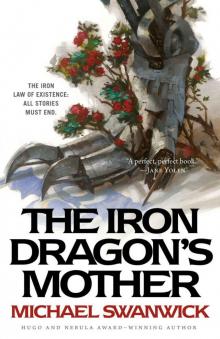 The Iron Dragon’s Mother
The Iron Dragon’s Mother The Mongolian Wizard Stories
The Mongolian Wizard Stories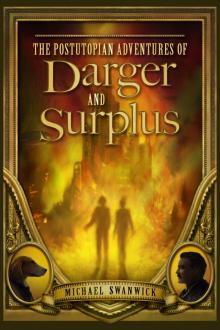 The Postutopian Adventures of Darger and Surplus
The Postutopian Adventures of Darger and Surplus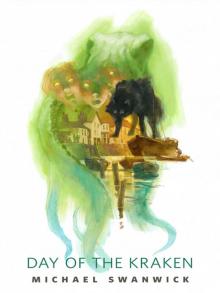 Day of the Kraken
Day of the Kraken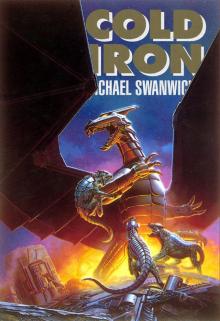 Cold Iron
Cold Iron Murder in the Spook House: A Tor.com Original
Murder in the Spook House: A Tor.com Original Radio Waves
Radio Waves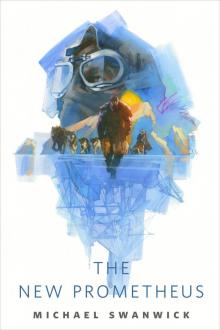 The New Prometheus: A Tor.com Original
The New Prometheus: A Tor.com Original Stations of the Tide
Stations of the Tide Vacuum Flowers
Vacuum Flowers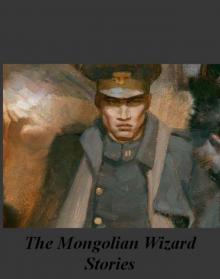 The Mongolian Wizard Stories (online stories 1-7)
The Mongolian Wizard Stories (online stories 1-7)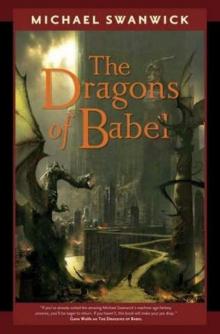 The Dragons of Babel
The Dragons of Babel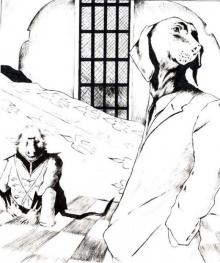 The Dog Said Bow-Wow
The Dog Said Bow-Wow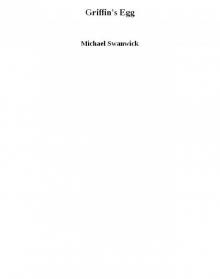 Griffin's Egg
Griffin's Egg The Best of Michael Swanwick
The Best of Michael Swanwick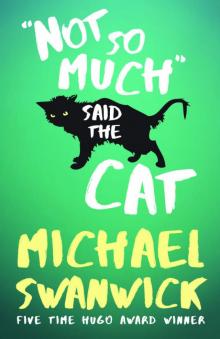 Not So Much, Said the Cat
Not So Much, Said the Cat In the Drift
In the Drift Vacumn Flowers
Vacumn Flowers Slow Life
Slow Life The Wisdom Of Old Earth
The Wisdom Of Old Earth Legions In Time
Legions In Time Scherzo with Tyrannosaur
Scherzo with Tyrannosaur The Year's Best Science Fiction (2008 Edition)
The Year's Best Science Fiction (2008 Edition)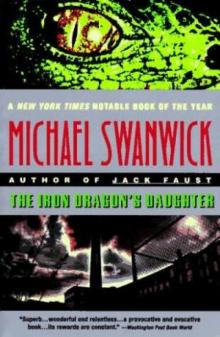 The Iron Dragon's Daughter
The Iron Dragon's Daughter The Very Pulse of the Machine
The Very Pulse of the Machine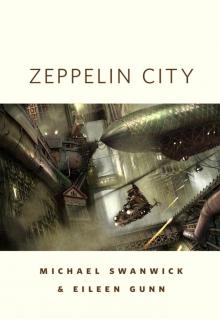 Zeppelin City
Zeppelin City Dancing with Bears
Dancing with Bears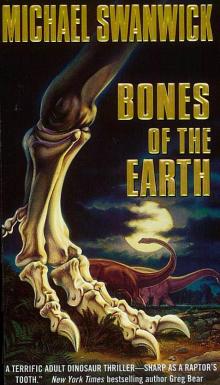 Bones of the Earth
Bones of the Earth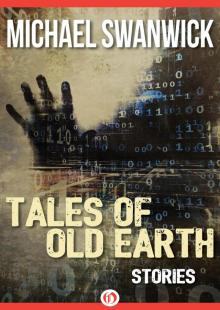 Tales of Old Earth
Tales of Old Earth Trojan Horse
Trojan Horse Radiant Doors
Radiant Doors